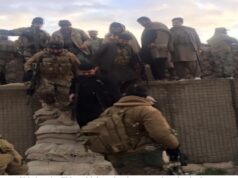Why the ASI is rewriting the history of the Battle of Haldighati
Following protests by Rajput organisations, the ASI has announced it will replace plaques at historically significant sites related to the Battle of Haldighati that say Maharana Pratap was forced to retreat

Representational image of Battle of Haldighati
This announced change has come after persistent protests and demands from some historians and Rajput organisations. Bhanwar Singh Reta, founder of the Jai Rajputana Sangh, insists that Maharana Pratap did not lose the battle, despite having to beat a tactical retreat, since the Moghul forces also withdrew after the battle ended. This issue is being described as a matter of pride—many Hindus admire Pratap for refusing to bow to the Moghul empire, despite the fact that doing so would have brought him all the comforts and honour that Man Singh received at Akbar’s court as a commander of Moghul soldiers and a governor of a province.
The ASI, which was given responsibility to maintain the archaeologically significant sites, including maintaining or updating infrastructure like plaques in 2003, has not as yet replaced them. “The plaques are worn out and some references have been worn off over the decades,” says an ASI officer. “We will update them with historically correct narratives about the event.” He adds that the new plaques are expected to come up sometime in August.
The Battle of Haldighati
A number of historians and descendants of Pratap have for long questioned the popular narrative that the Battle of Haldighati ended with defeat of Maharana Pratap. They quote a number of scholars, describing a different interpretation of the conflict. In the battle, despite Pratap’s forces being outnumbered by the Moghul army, Pratap led his cavalry in an assault on the invaders, even charging at Man Singh, who was mounted on an elephant. Initially, Pratap’s army, familiar with the terrain of the region, succeeded in pushing back Akbar’s forces. However, the Moghul forces rallied after a rumour spread that Akbar himself was on his way to take the field. The battle is described as being so fierce that the yellow soil of the area—from which it derives its name, Haldighati, the valley of turmeric—to red, which is why one of the battlefields is now known as Rakth Talai, the pool of blood.
With the now-advancing Moghul forces focused entirely on Pratap, one of his generals—Man Singh Jhala—took up Pratap’s emblems to decoy them away, while Pratap himself beat a tactical retreat. Jhala died for his valour, and is revered for his sacrifice to save Pratap. However, Pratap’s brother Shakti Singh—who had sided with Akbar because of family relations with the ruler of Bikaner, who was in the Moghul camp—recognised Pratap and gave chase. However, Singh proved to be loyal to Pratap. According to the histories, though he caught up with the ruler of Mewar, he allowed him to escape, even giving Pratap his own horse after Pratap’s horse, Chetak, was killed. Man Singh retained the battlefield, but ordered his forces not to chase Pratap’s soldiers, nor to loot and pillage the area. After this, the Moghul army is said to have abandoned the field.
The Retelling
Until now, the general consensus was that the battle was not a victory for either side; Pratap was forced to retreat, and though the Moghuls won the battle, they were unable to hold the land, and themselves retreated. Rima Hooja, a Jaipur-based historian quotes various historical works to conclude that in all likelihood, the battle remained inconclusive, but again highlights that the Moghul army failed to capture the territory it had set out to do.
Right-wing historians insist that since the battle ended with the Moghul army abandoning the field, it was a defeat for Akbar’s forces. To prove this case, some assert that Man Singh was forbidden from entering Akbar’s court for refusing to chase Pratap’s forces, implying this was a defeat of sorts. Others go a step further—Chandra Shekhar Sharma, an associate professor at Government Meera Girls’ College in Udaipur maintains that this was a punishment for being defeated.
Sharma has for some years also challenged the date given on the plaques—June 21—saying that it was actually fought on June 18. He is a prominent voice among those questioning the general consensus that the battle ended with Pratap’s defeat, or at best, that it was inconclusive. He argues that since Akbar had to launch more attacks against Pratap, this means that his forces lost at Haldighati. He also says that after the battle of Haldighati, Pratap is said to have distributed land to people, something only a ruler can do. He has also asked government to reconsider the label given to one site—Badshah Bagh, where Akbar’s forces are said to have camped—claiming that this is historically incorrect.
Reta of Jai Rajputana Sangh says his organisation has been demanding the plaques be changed for some time, and that it was only after they held protests on June 19, a day after the anniversary of the Battle of Haldighati, that authorities seriously considered their demands for Pratap not to be described as having lost the battle. After these protests, BJP leaders Diya Kumari, Rajasmand MP and Deepti Maheshwari, MLA of Rajsamand, took up the matter with the Union government and the ASI, which ultimately led to the decision to replace the plaques. As it happens, Diya Kumari, a princess of Jaipur royalty, is a descendant of Man Singh, who fought against Maharana Pratap.




